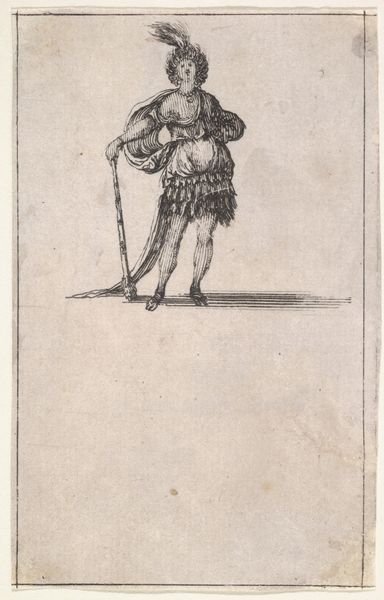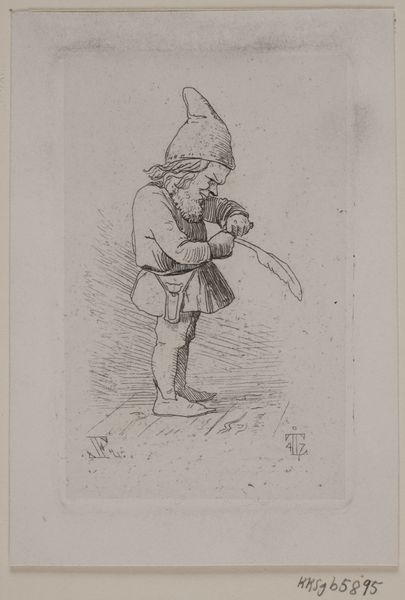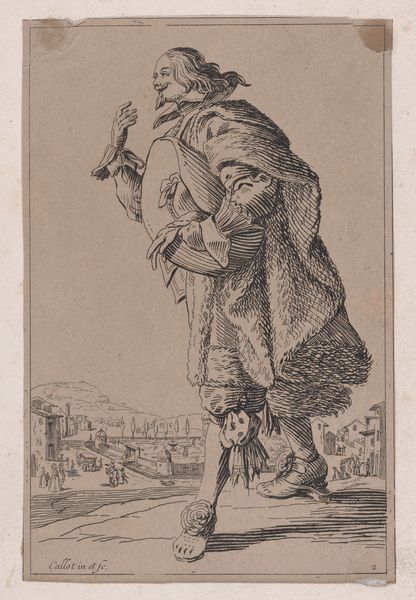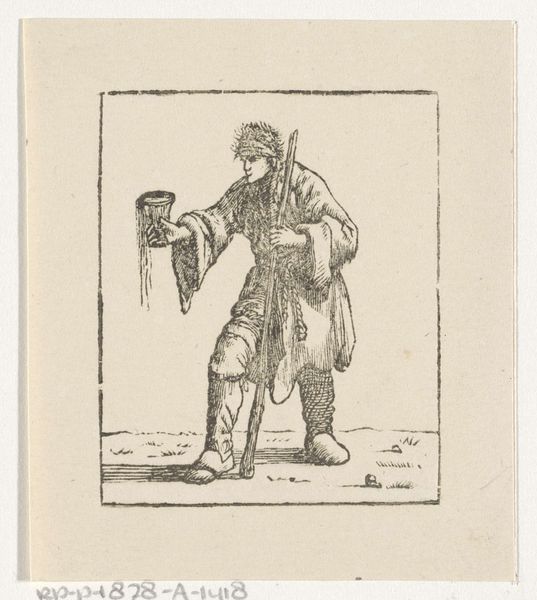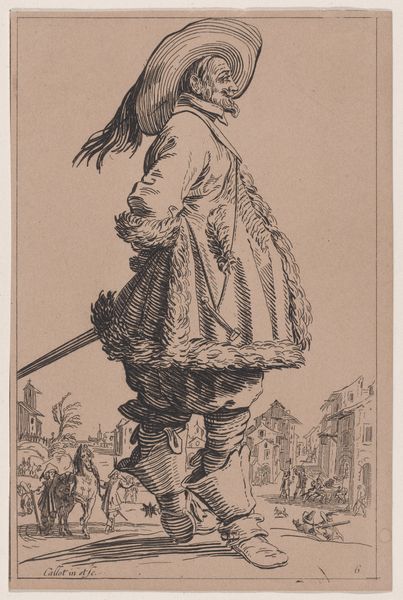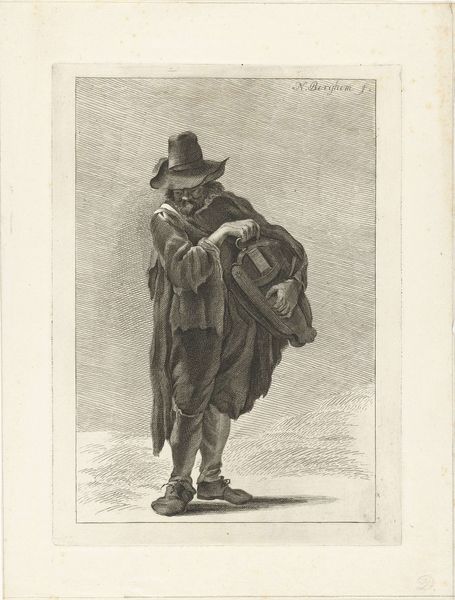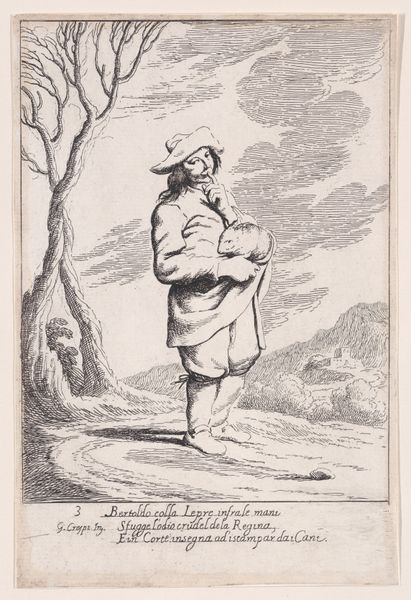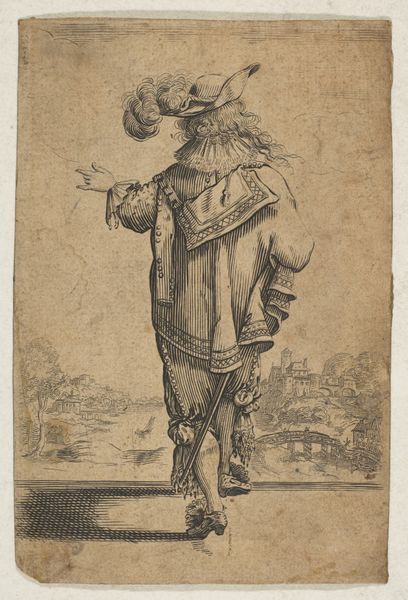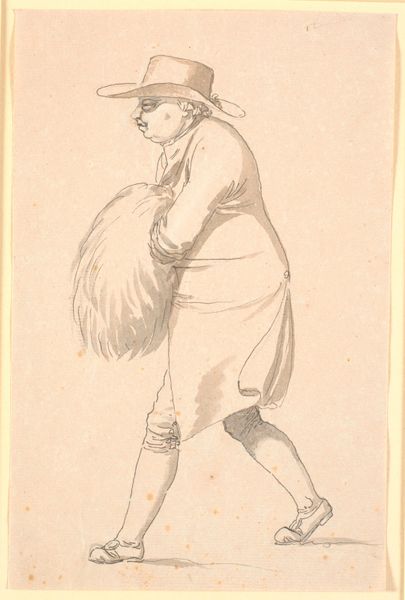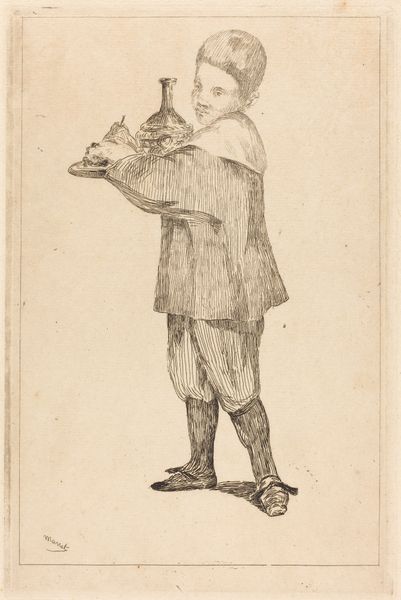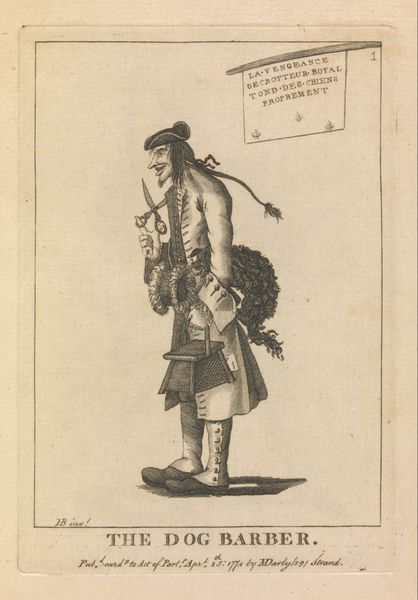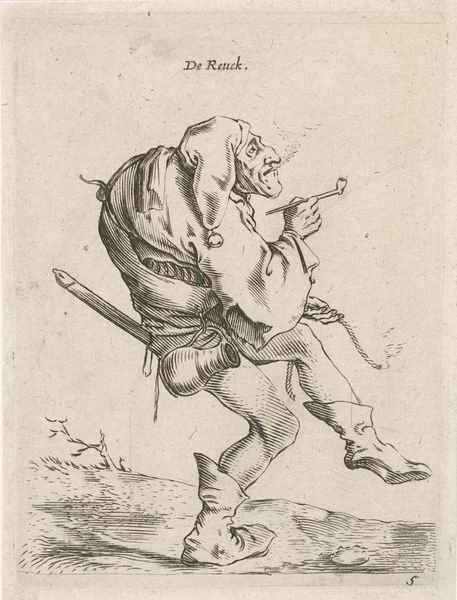
print, woodcut
#
narrative-art
# print
#
figuration
#
woodcut
#
history-painting
Dimensions: 204 mm (height) x 127 mm (width) (bladmaal)
Editor: Here we have Södergren's 19th-century woodcut, "Heimdal." The figure, presumably Heimdal, has a regal if somewhat stern presence. What's your interpretation of this work? Curator: I see this print as deeply embedded in the 19th century’s fascination with nationalism and mythology. The choice to depict Heimdal, the Norse watchman of the gods, using the graphic medium of woodcut is striking, especially when we consider woodcut's own history in disseminating socially conscious narratives. The stern figure acts like a symbol of vigilance, but who are they really watching, and for whom? Who did the artist intend to see themselves in Heimdal? What societal anxieties might the work speak to? Editor: That's fascinating! I hadn't considered it from the perspective of societal anxieties, but that makes sense given the rise of nationalistic movements in the 19th century. The woodcut technique does give it a kind of…everyman feel, like a popular print for the masses. Curator: Exactly. So how does visualizing Heimdal through print— historically, a tool to democratize art and proliferate radical, revolutionary ideologies—complicate how you read its nationalist symbolism? The rooster by Heimdal's side also tells of that societal context. Are you familiar with its symbolic weight? Editor: The rooster is connected with the sun... Doesn’t that connect the artwork with historical or mythical accounts of the period? It’s like Södergren tried to take ownership of the cultural context, and imbue that moment with his own interpretation of past accounts, maybe filtered by 19th century accounts of identity and gender. Curator: Precisely. Consider how Södergren situates Heimdal's hypermasculine form in the intersection of printmaking's accessibility and the burden of myth. I would encourage you to continue asking such questions. What narratives are being constructed? Who is being included or excluded from that national "we"? Editor: Thank you, that’s very helpful to think about. Now, seeing this piece in context, I see new layers of meaning in the piece I hadn't noticed before. Curator: Indeed. Art, and especially prints such as this, can operate as visual battlegrounds where these crucial issues of power, identity, and representation are constantly being negotiated.
Comments
No comments
Be the first to comment and join the conversation on the ultimate creative platform.
